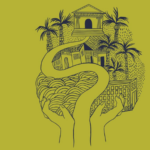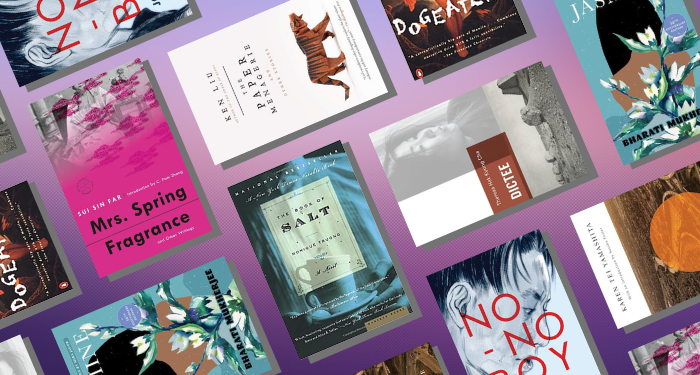
Some of the Most Influential Asian American Literature of All Time
This post was originally going to be called “The Most Influential Asian American Literature of All Time” but who on earth could write that post? Instead, I’ve added the qualifier “some of” as a subtle acknowledgment that there is simply no way to get all the greats of Asian American literature in a single post. It would be NEVERENDING. Seriously, readers, there’s just too much good stuff out there. (And yes, I know you already know that!)
One place to not start your reading is with Pearl S. Buck. Famous for her 1931 novel The Good Earth, Buck was a white US American woman who was raised in China by her missionary parents. While her intentions were generally good, there is a long history of her works being taught by way of introduction to Chinese culture and Chinese American literature. This is, as you can imagine, really problematic. For an interesting read on the massive influence of Buck’s work on American perceptions of China, among other things, check out Hua Hsu’s article “China in the American Imagination: A Survey of Ephemera”.
So. Where should you start? That’s completely up to you. I’ve assembled a list of works written by authors from a wide variety of Asian ethnic backgrounds and spanning over a century. You’ll find short stories, poetry, memoir, graphic novels, essays, novels, and more. I’ve chosen to organize this list chronologically by original publication year for ease of navigation. Have fun!
Influential Asian American Literature
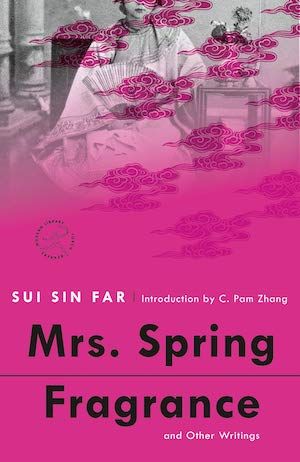
Mrs. Spring Fragrance by Sui Sin Far
Sui Sin Far was the pen name of Edith Maude Eaton. Mrs. Spring Fragrance was published in 1912. It’s a collection of short stories for children and adults. The themes are fairly reflective of the time of publication, focusing on debunking negative misconceptions of Chinese people and culture as well as the tensions that can result from immigrating. Interestingly, it’s one of the first (if not the first) works of fiction published by a mixed race Asian American writer.
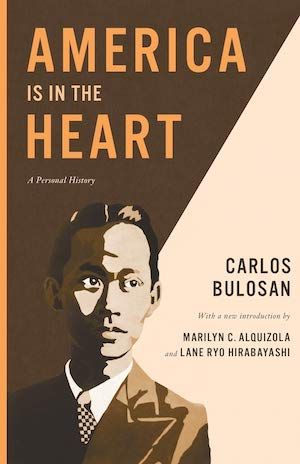
America is in the Heart by Carlos Bulosan
Often claimed as one of the first Filipino American literary works, America is in the Heart was first published in 1946. The same year saw the Philippines gain independence from the US, which had controlled the nation since purchasing it from Spain in the 1898 Treaty of Paris (months after the Philippines had already declared independence from Spain) as well as a dramatic shift in US immigration and naturalization policy concerning the Philippines. Within this context, Bulosan’s semi-autobiographical novel portrays a Filipino immigrant’s experiences in the Pacific Northwest and California, grappling with racism and discrimination (among other things).
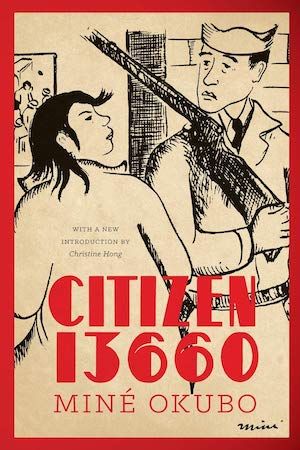
Citizen 13660 by Miné Okubo
Published in the aftermath of WWII, Citizen 13660 is Miné Okubo’s firsthand account of her experiences being incarcerated in the US’s Japanese internment camps. As you might have guessed, it takes its title from the number the US government assigned to Okubo during this time. Not only that, but it’s essentially a graphic memoir as it contains over 200 drawings Okubo produced in the camps. Being that it was originally published in the 1940s, it’s significant not only as an early graphic narrative but also as an important Asian American literary work.
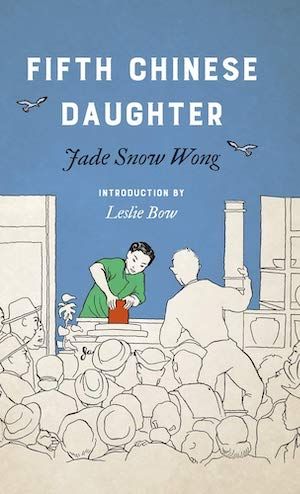
Fifth Chinese Daughter by Jade Snow Wong
While it has somewhat fallen out of favor in recent decades, Jade Snow Wong’s autobiographical work was one of the few Asian American books to make it to the mainstream during the mid-20th Century. It made such a splash that the US State Department sent Wong on a book tour in Asia. (Truly!) Fifth Chinese Daughter has been criticized for glossing over harder realities Chinese Americans contended with during the era about which Wong writes, and also for what some perceive as its naive parroting of the image of the US as a meritocracy. Despite this, I had to include it on this list because of its erstwhile popularity — how could I not include a book that writers like Maxine Hong Kingston have mentioned as an influence on their work?
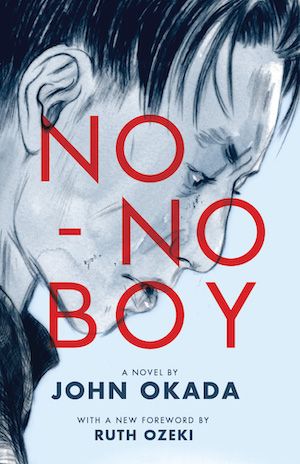
No-No Boy by John Okada
Okada’s novel about Japanese American men in the wake of WWII. You can read a more detailed description of the background behind the book’s title, but the gist of it is that it derives from a label applied to nisei (second-generation) Japanese American men considered draft resisters. It is a complex and nuanced look at some of the fallout that awaited a specific subset of Japanese Americans who were incarcerated under Executive Order 9066. It didn’t get a strong reception when it was originally published in 1957, but it has since become a foundational text in Asian American literature.
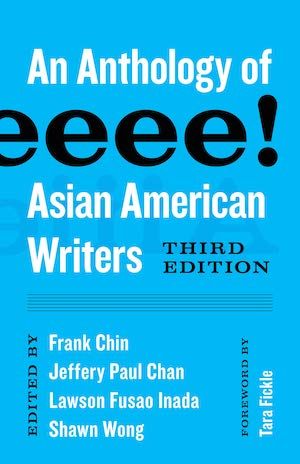
Preface to Aiiieeeee!: An Anthology of Asian-American Writers
While the anthologized works in Aiiieeeee! are definitely worth reading, it’s the preface to the first edition that’s had a huge influence in the field of Asian American literary studies. There are faults with it (such as the limited scope of Asian ethnic groups included in the anthology), but it’s an important piece of writing.
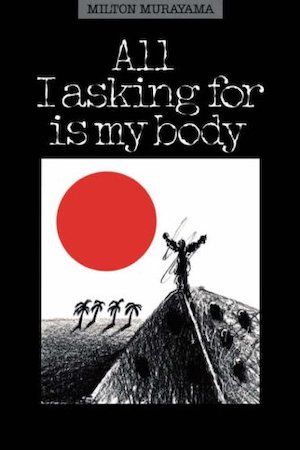
All I Asking for is My Body by Milton Murayama
Milton Murayama’s novel follows two nisei brothers, Kiyo and Toshio, in Hawai’i during the WWII era. They struggle with poverty alongside intergenerational and cultural expectations. The brothers’ lives take very different turns, but ultimately this novel covers issues ranging from the complex history of plantations in Hawai’i to family (and pretty much everything in between). It’s a beautifully crafted and heavily influential text that, importantly, focuses on Japanese American experiences in Hawai’i.
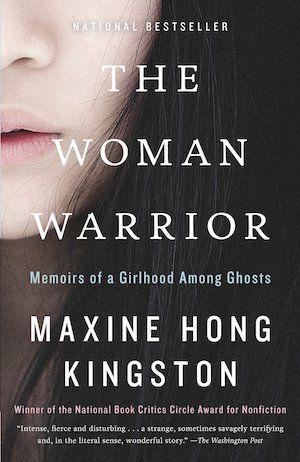
The Woman Warrior: Memoirs of a Girlhood Among Ghosts by Maxine Hong Kingston
Maxine Hong Kingston’s book blurs the lines between novel and memoir. Famously difficult to categorize, it’s had a tremendous influence on the Asian American literary landscape. Often discussed in terms of feminism, The Woman Warrior is considered a foundational text in contemporary Asian American literature. It grapples with silence, gender roles, and intergenerational conflict. Also, it’s a really good read!
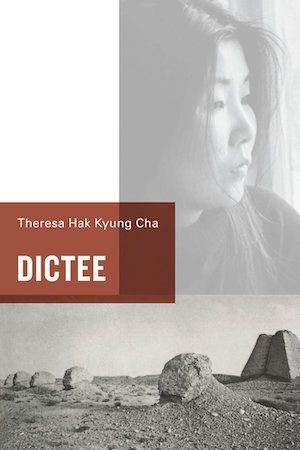
Dictee by Theresa Hak Kyung Cha
Dictee is what you might consider “experimental” in nature. It’s poetry, but it’s also sometimes considered a novel with elements of autobiography. Formally, it’s got a ton of interesting stuff going on. There are poems, of course. There are also images. The label “postmodern” comes to mind as one way to attempt to classify this genre-defying book. Like Kingston’s Woman Warrior, Cha’s Dictee tends to be talked about in terms of feminist literature — but there’s so much more to it than labels like these. If you’re game for a heavily intellectual foray into 20th Century Korean and Korean American history (both personal and political), then this is the book for you!
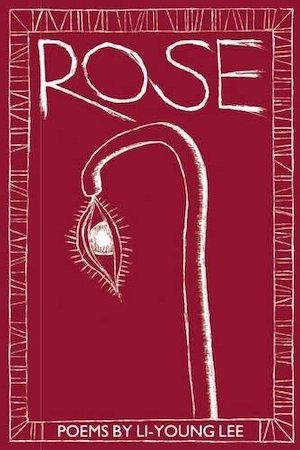
Rose by Li-Young Lee
Rose is Li-Young Lee’s first published poetry collection. While I could have chosen any of his collections, this one contains one of my absolute favorite of Lee’s poems (and one often considered a “classic” of Asian American poetry): “Persimmons.” The grace with which Lee moves from a negative classroom experience to his father’s blindness is breathtaking. Lee’s poetry, recognized with multiple prestigious awards, has long been considered a staple of Asian American literature (which Lee has spoken about in interviews — if you’re interested in reading some of these interviews, check out Breaking the Alabaster Jar: Conversations with Li-Young Lee.)
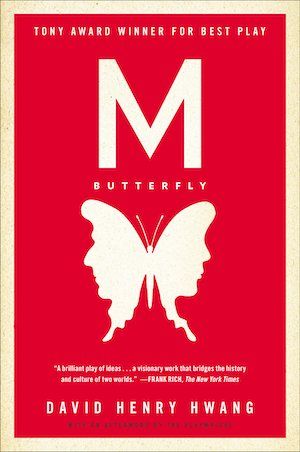
M. Butterfly by David Henry Hwang
A finalist for the Pulitzer Prize in Drama, Hwang’s play toys with the Orientalist themes of Puccini’s opera Madame Butterfly to wrestle with racism, gender, sexuality, colonialism, and more. That might make it sound very serious and stuffy, but believe me: it’s not. It’s a compelling, interesting, and thought-provoking work. (If you don’t believe me, maybe you’ll believe the multiple Tony Awards the original Broadway production of M. Butterfly won.)
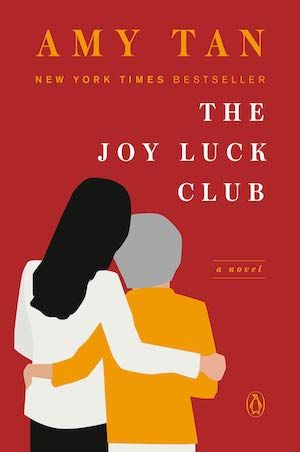
The Joy Luck Club by Amy Tan
Amy Tan has written several books, but I had to include The Joy Luck Club because of the magnitude of its cultural impact. It was made into a film in 1993 (only the second major Hollywood production to include a majority Asian and Asian American cast and crew), and that film made a big splash. While some have criticized Tan for playing into certain stereotypes about Asians and Asian Americans, there’s no doubt that this book (and its subsequent cinematic adaptation) left an impression on Asian American literature.
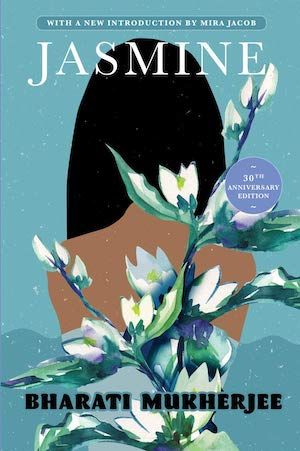
Jasmine by Bharati Mukherjee
Mukherjee’s novel follows protagonist Jasmine from the violent act that left her widowed at the young age of 17 through years of her life in the United States. The ever-changing names other characters apply to Jasmine as well as her varying relationships (romantic and otherwise) underscore a variety of issues attendant to being an Asian immigrant in the US. The fact that the novel moves from India to Florida, New York, and Iowa allows for a dynamic engagement with the concept of Asian Americanness.
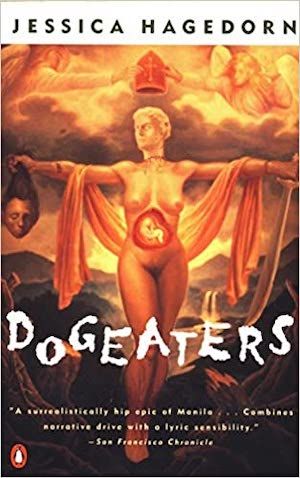
Dogeaters by Jessica Hagedorn
Dogeaters won the American Book Award and for good reason (obvs). Not only that, but it’s considered an essential work of Asian American literature. It’s a whirlwind of a novel, shifting between multiple narrators and seriously contending with such issues as western (specifically US American) cultural influence in the Philippines, sexuality, and the Marcos era. (If you’re interested, check out this retrospective interview with Hagedorn about the novel’s legacy.)
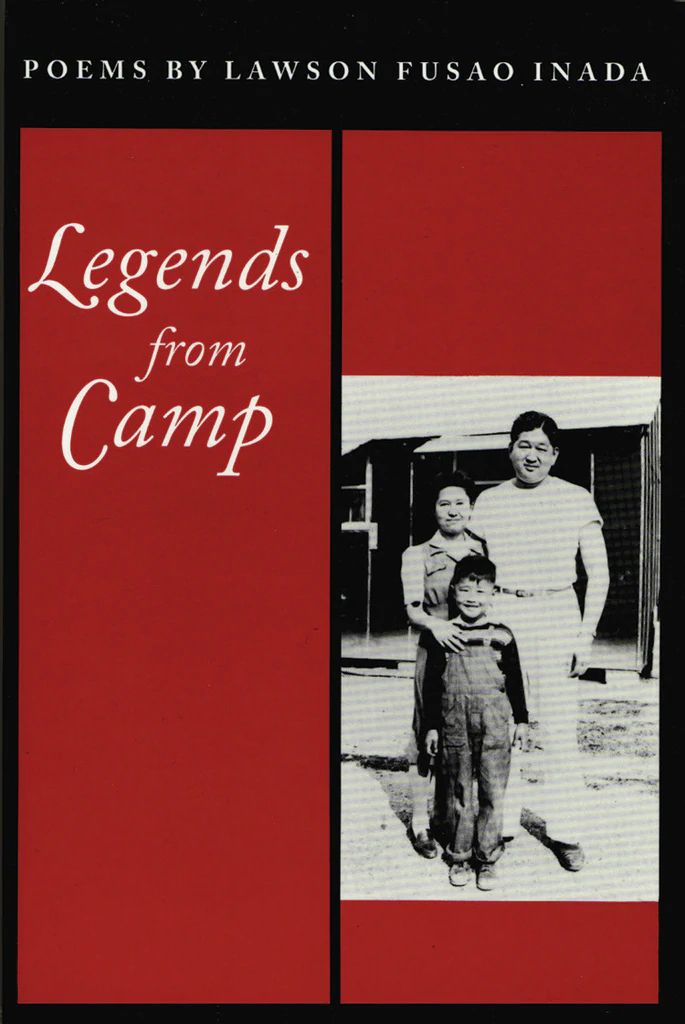
Legends from Camp by Lawson Fusao Inada
Legends from Camp is a powerful work of poetry. It grapples most intensely with US histories of Japanese internment, and in so doing it also touches on place, family, friendship, race, music, and art (to name just a few major themes). Published in 1992, just four years after Reagan officially apologized for internment, it is not only a solid piece of artistry but also an important reminder of the histories that continue to inform present-day realities in the United States.
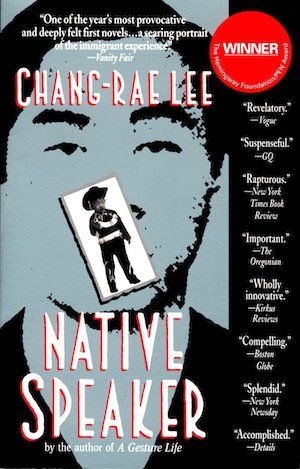
Native Speaker by Chang-rae Lee
Native Speaker was the first novel by a Korean American writer to be picked up by a major publishing house. As such, it got a lot of attention and remains an important fixture in Asian American literature. Given the political premise of the novel — Korean American protagonist Henry Park has been enlisted to infiltrate a Korean American politician’s campaign office — it’s no surprise that Lee’s novel gets a little, well, political. But that doesn’t come at the expense of its human elements, which are (for me) what drive the story.
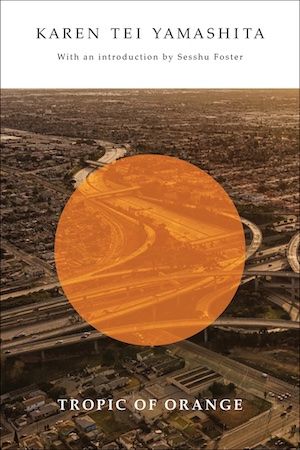
Tropic of Orange by Karen Tei Yamashita
While Tropic of Orange isn’t necessarily a household name in the general public, it got readers’ attention when it came out in 1997. Set in Los Angeles, it follows several different protagonists as the landscape shifts and flexes in the presence of a “magical” orange. As the characters’ storylines intersect and violence simmers just below the surface, Yamashita’s novel contends with everything from violence and racism to immigration and global capitalism. It’s a fast-paced book that asks readers to think deeply about the geographies they inhabit.
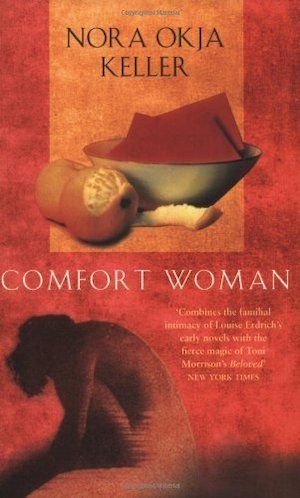
Comfort Woman by Nora Okja Keller
Comfort Woman is a haunting and important novel that takes on the awful history of Korean comfort women during WWII and the Korean War. Writing about real-life traumas that occurred on such a large scale is tricky, but Keller’s work was recognized with an American Book Award (among other honors). It’s a novel about intergenerational trauma and the enduring strength of women. (tw for sexual assault and exploitation)
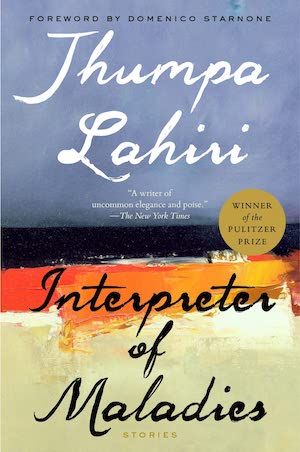
Interpreter of Maladies by Jhumpa Lahiri
I would be remiss to leave this Pulitzer Prize-winning short story collection off of this list. Although, truth be told, I could include any of Lahiri’s books. Interpreter of Maladies is a compelling read with stories that focus on Indian and Indian American characters. My favorite story is the last one, “The Third and Final Continent;” but one of the things that’s especially powerful about this collection is that the stories are each so very different from one another. Some critics have characterized it as a story cycle, which makes sense in that the diverse array of stories functions cohesively despite there not being any recurring characters.
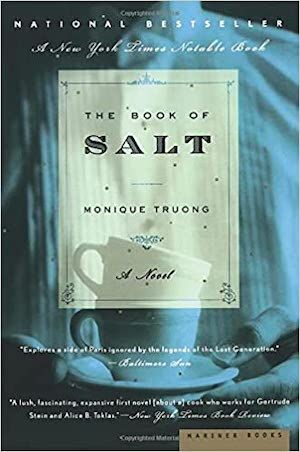
The Book of Salt by Monique Truong
This Lambda Literary Award-winning historical novel focuses on the Vietnamese-born character Binh, who works as a cook for Gertrude Stein and Alice B. Toklas in Paris during the 1920s and 30s. It is one of the most lovely pieces of writing I have had the pleasure to read — the prose is just amazing. Personal opinions aside, Truong’s novel takes on histories of colonialism, queer sexuality, and artistic exploitation in one fell swoop. Salt comes up again and again (hence the title) in myriad and interesting ways.
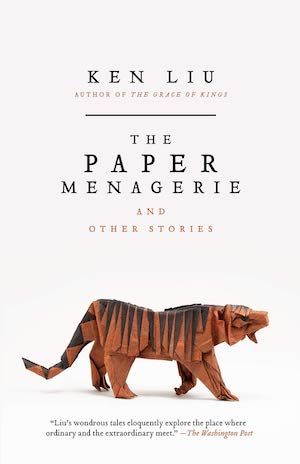
The Paper Menagerie and Other Stories by Ken Liu
The titular story in Liu’s collection won the Hugo, Nebula, and World Fantasy Awards. That’s right, all three of them. It was the first work of fiction to achieve this feat. It’s also, notably, the only work of genre fiction on this list (although I could write an entire other list about Asian American genre fiction!) — this is mostly due to the fact that it was so highly decorated and, therefore, influential. While the title story gets a lot of attention, all of them are well worth the read (as is Liu’s Dandelion Dynasty series, the fourth and final book of which is due out this June).
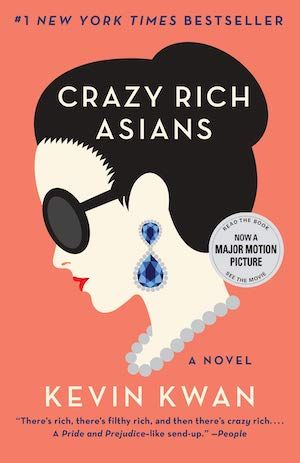
Crazy Rich Asians by Kevin Kwan
Like The Joy Luck Club, I have to mention Crazy Rich Asians if for no other reason than because it garnered such widespread critical attention. Launching the third major Hollywood production to feature a majority Asian and Asian American cast and crew, there’s no denying the visibility and impact of Crazy Rich Asians. Also, for the record, the book has elements of satire and wit that I don’t think translated fully (or really at all) to the film. Regardless, Kwan’s novel (the first of a trilogy) made quite an impression that reached far beyond academic circles.
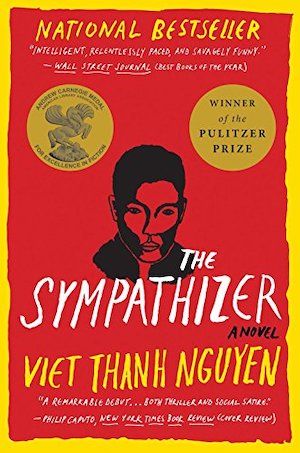
The Sympathizer by Viet Thanh Nguyen
This Pulitzer Prize-winning novel set in South Vietnam and Los Angeles is a true tour de force. It draws on a wide variety of literary traditions, including dark comedy, immigrant narratives, metafiction, and historical fiction. That should give you a sense of the novel’s complexity and richness. It’s a prime example of what some critics refer to as transpacific Asian American literature. It’s also just a really good story. Bonus: Nguyen’s sequel, The Committed, was released last spring.
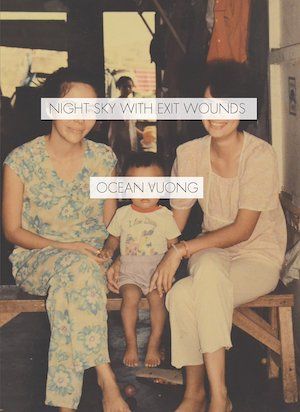
Night Sky with Exit Wounds by Ocean Vuong
Despite its relatively recent publication date, Vuong’s debut poetry collection garnered significant critical and scholarly acclaim. It’s hard for me to describe what exactly is so moving about Vuong’s writing, but I suppose it has everything to do with raw vulnerability and masterful composition. Put simply, Vuong doesn’t shy away from the deep stuff. This collection is about love and family just as much as it’s about war and loss. Talk about scope! And if you like what you read here, you might be interested to know that Vuong’s second poetry collection, Time is a Mother, was released this spring.
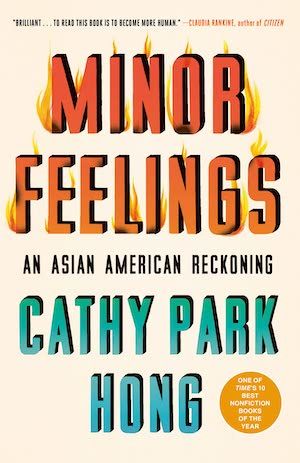
Minor Feelings: An Asian American Reckoning by Cathy Park Hong
Published during that fateful February that saw COVID-19 force a global shutdown, Minor Feelings is indeed a reckoning. It’s a thoughtful collection of essays that took on extra importance in light of the anti-Asian hate that bubbled to the surface in those early months of the pandemic. Additionally, Hong’s writing is thought-provoking and engaging. Questioning the ways Asian Americans are situated in the popular imaginary, Minor Feelings asks readers to think critically about the full and complex racial landscape in the US today.
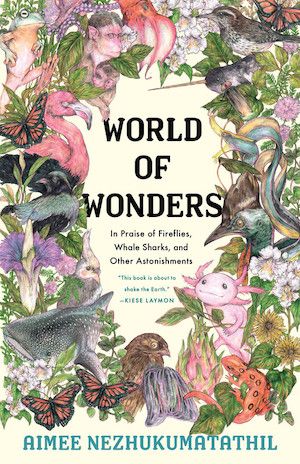
World of Wonders: In Praise of Fireflies, Whale Sharks, and Other Astonishments by Aimee Nezhukumatathil
World of Wonders made what you might call a quiet impression. You might wonder at the inclusion of a book that’s only a couple of years old, but it has attracted so much mainstream attention that I couldn’t leave it off this list. (Also, I adore this book on so many levels.) Lauded by literary critics and the reading public alike, Nezhukumatathil’s beautifully illustrated collection of essays includes elements of memoir, cultural criticism, and nature writing. It’s a really dynamic and interesting read, making it no wonder that it’s the recipient of so much praise and so many accolades.
Not Finding What You’re Looking For?
You’re sure to find something to whet your readerly appetite on this list of Asian American books to read this year. Delving back just a little further, you might consider these 5 books by AAPI authors. Alternately, try listening to this podcast for a discussion of Asian American femme authors.





